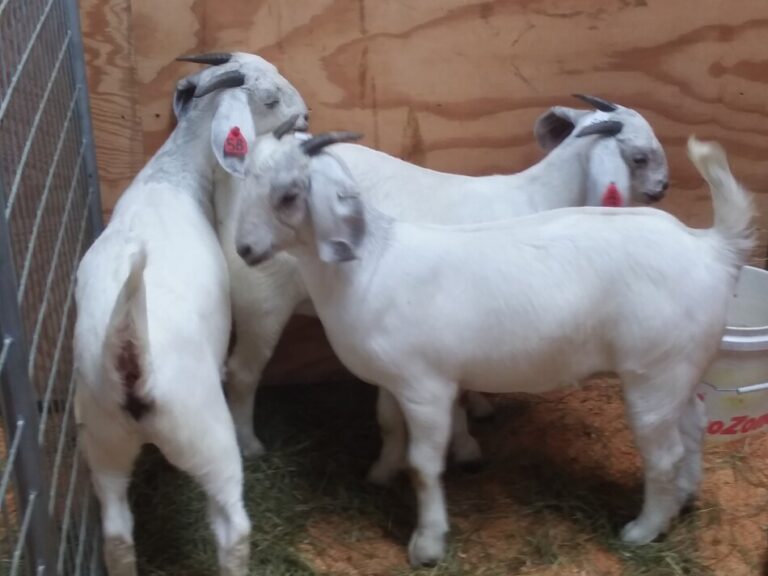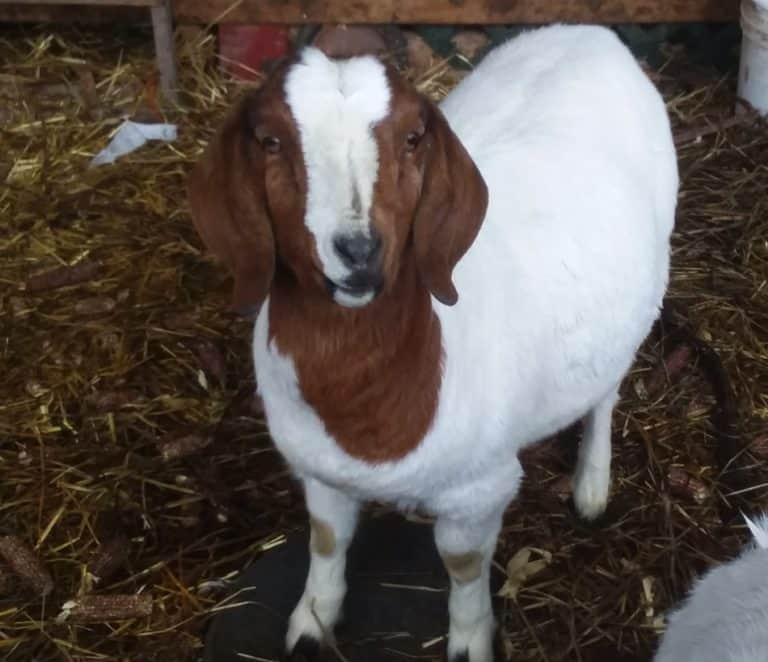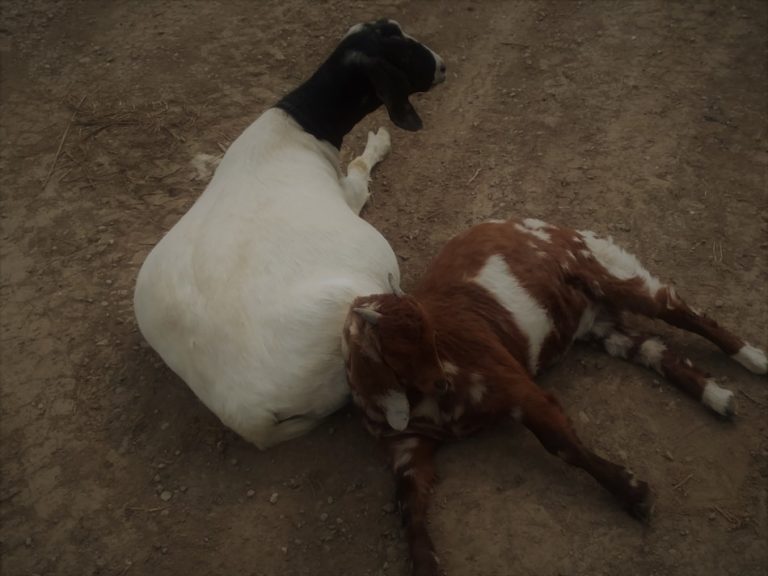What Is The Current Selling Price For Goats? (Reading Market Reports)

How much are your market goats worth? Of course, you can ask around or look at online ads, but only if you plan to privately sell all of your goats.
What about the current auction price for market goats in your area? How well are goats selling lately and what should you expect to get from yours?
The current selling price for commercial goats is up to $250 for kids, $110-550 for Bucks, $75-400 for Does and $130-520 for wethers. Price ranges by condition of the goat, demand and breed/type of goat. Prices for breeding stock, especially show stock, will be significantly higher.
First off, you’ll need to learn how to read a market report. The market report will give the commercial price. The price will vary based on seasonality and demand and is based on the meat value of the goat.
Breeding stock prices are not listed in the weekly auction reports. These reports are for meat animals.
If adult goats are listed in the market report, they are generally culls.
Still looking for goats? Best Breed Of Meat Goat For Beginners will walk you through choosing the breed or type of goat that will suit you and your area the best.
Not all areas will have an auction within a reasonable distance. If this is the case for you, be sure you have a solid plan to privately sell all of your market goats and culls.
How Do Livestock Auctions Work? goes over what you need to know when you are selling your animals, goats included, at auction.
When Is The Best Time To Sell Goats? will help you figure out the seasonality of your area’s goat market.
How to read a goat market report
Depending upon how the auction works in your area, you’ll see one of two things: goats sold by weight or by the head.
Market kids sold by weight
When you look at the market report you are going to see a list of weight ranges and the corresponding price ranges for those weights.
Here is an example of market kids sold by weight:
| 20-40# | $200-295 CWT |
| 40-70# | $210-290 CWT |
| 70# and up | $180-255 CWT |
You’ll notice that the weight of the goat is listed with a range for the group and the prices have CWT written after them.
What is CWT? CWT is the abbreviation for hundredweight. Hundredweight means that the price listed is per 100 pounds.
Since most of the market goats selling would be under 100 pounds, you’ll need to do a bit of math to figure out the price per head.
How to figure price per head when sold by CWT
Using the table above as an example, we’ll go through figuring the price per market kid. It’s easy.
We’ll use the 40-70 pound range goats. Let’s say the market kids you plan on selling are 50 pounds.
We’ll start with the high price in that weight range, $290, then do the math again with the low price.
There are multiple ways to figure the price of this goat, but here’s the way that works best for me: $290 per 100 pounds could also be listed as $2.90 per pound, we just moved the decimal point over.
This per pound price is the number we need.
Take the per pound price x the weight of your goat=price for this goat at this sale
$2.90 x 50 pound goat = $145 per goat
For the low price the math is the same:
$2.10 per pound x 50 pound goat = $105 per goat
For this sale a 50 pound market goat sold for between $105-145 each.

Figure price by using weight as a percent
A second way to figure out the price per market goat is to take the selling price and multiply it by the weight of the goat as a percent.
It looks like this $290 CWT x 50% = $145
Using the weight of the goat as a percent is a faster way to figure price per head than figuring price per pound.
Market kids sold by the head (each)
Good news, this report is really easy to read! The prices you see listed are the prices you get (after auction commissions come out).
If your market report has market kids grouped by weight, you are golden! This is the easiest report to read and very helpful to the seller.
Generally, only the larger auctions that have a large number of goats sell each week will have this information breakdown available.
If the market kids are not grouped by weight, you’ll see a huge range in prices that are difficult to get much information from.
If this is the case, you’ll need to talk to someone who frequents the auction or, better yet, go to the auction and see what is happening in person.
In our area, the market kids are not grouped by weight. The report just says number sold and price range. This could be for bottle babies up to 100+ pounders!
This is better than no information, but not overly helpful to the potential seller. You need to go to the sale to get the scoop.
Here are two examples of market reports with market kids sold by the head:
Market report with goats that are not grouped by weight
| Kid Goats | $180.00 and down |
| Nannies | $50.00-345.00 |
| Wethers | $100.00-550.00 |
| Billies | $60.00-485.00 |
Market report with goats grouped by weight
| 45-46# | $140.00 – 145.00 by the head |
| 60-65# | $175.00 – 220.00 by the head |
| 70-75# | $170.00 – 285.00 by the head |
| 82-88# | $250.00 – 305.00 by the head |
| 90-94# | $235.00 – 310.00 by the head |
| 100-120# | $255.00 – 400.00 by the head |
Which ever type of report you have in your area, the prices are already figured up for you, no math required.
Why is there such a range in prices?
Generally, price is a reflection of the quality and overall health of the goat.
If the goat comes through the sale ring in great condition, walks well and looks good overall, it will bring more money.
Goats that are scruffy, limping or underweight will be priced on the lower end of the range.
There will be changes in the prices from week to week, especially if there is a big holiday coming up. The prices will also change based on supply and demand.
Goats sold straight off of pasture will join the glut of everyone wanting to get their goats sold and you’ll get less money per goat.
Selling goats during the “off season” will get you higher prices per goat.
Also, some breeds of goat are not popular as meat goats. For instance, in our area Pygmy goats do not sell as well as other breeds of the same weight or age would for meat.
This is not to say that there is anything wrong with Pygmy goats. I am merely pointing out that each area has types of goats that sell well based on the consumer demands of the region.
There are regional differences in prices
Each area will have differences in price, reflecting the preferences of the consumer. In some areas a 40-50 pound market goat is ideal, other areas like them more in the 60-70 pound range.
Additionally, each area tends to prefer a certain type or build of goat. For instance, in our area meat goats like Boer and Savanna are the preferred market kids.
The difference in price in our area, Ohio, for a meat type kid and a dairy type kid is substantial, close to double the price!
Remember, it’s not what you think you should get for your goats, it’s what the buyers need for their customers.
The reason I point this out is in our area Kiko or Kiko type goats do not sell well. I know in other areas of the country, the Kiko type is preferred by the consumer and sells very well, but here that’s not the case.
You need to know what the goat buyers at your auction are looking for.
If you want to raise a different type or style of goats, you’ll need to privately sell them to get good prices for your efforts.
Show stock goats or specific genetics will be priced higher
This range of prices is for commercial meat goats, whether those genetics are dairy type or meatier bodied. Not included anywhere here is the really high quality show type breeding stock animals.
They will be sold through a specific sale at another auction, around here Danville Auction, in Danville, Ohio, and bring significantly more money.
For instance, a more commercial Boer type doe has been selling for $350-500 each, but a show Boer doe will be bringing closer to $800-1,000. Same idea with bucks, but more along the lines of $3,000+ for the show lines.
I’m sure there are higher prices paid for show prospect goats and special genetics, these are just the prices I have seen paid when I attended a sale.
The main point here is that the prices paid for show potential goats and commercial goats are quite different. If you are looking at a market report and prices seem off to you, be sure to check that the sale is for commercial goats.
What is on the market report?
The market report will list the total head sold for the day and some breakdown of the prices.
As you can see in the tables above, some market reports are very informative and others, not so much.
Things you will not find on the market report are: condition of the goat, color preferences of the buyers, body style preferences of the buyers, etc.
If at all possible, you need to go to the auction. No auction report will ever be as informative to you as attending the sale.
What is not on a market report?
There are variables that you will notice at the auction that you may not be able to pick up on when reading the market report.
These variables can cause massive fluctuations in price from week to week and per head.
Here are just a few of the variables that will not be on an auction report:
- Health of the goats (sickness or limping)
- Condition of the goat (body fat)
- Age of the goat, even in market kids
- Breed or apparent breed of the goat
- Holidays or celebrations that are effecting price this week
- Over or under supply of goats for the week
- Seasonality of demand
Some of this information, like holidays and seasonality, can be figured out by doing a bit of research.
Other variables, like health of the goat or body condition, would not be found through research or looking at past auction reports.
You would need to be there.
Where to find a market report for goats
For Ohio, the best source of current auction prices is to look at the Ohio Grain and Livestock Markets in the Farm and Dairy.
Texas has multiple auction reports including San Angelo Producers in San Angelo, Texas and Hamilton Commission Company, in Hamilton, Texas.
For the auction closest to your area, do an online search. You’ll come up with something that will give you an idea of what you can expect.
Other selling options for your goats
As mentioned above, for some areas an auction is not a reasonable option. For other goat raisers the auction is a last resort option because of the high value of their goats.
I understand both situations, however, the reality is you will need to eventually sell some goats. Start working on attracting buyers for your goats far before you need to have them gone.
Here is a great article on privately selling your goats from Onion Creek Ranch. Look around while you are on this site, loads of great information here!
Resources:
Mt. Hope Auction Market Report for November 3, 2021 is the source of the prices listed in the bolded paragraph at the beginning of the article




